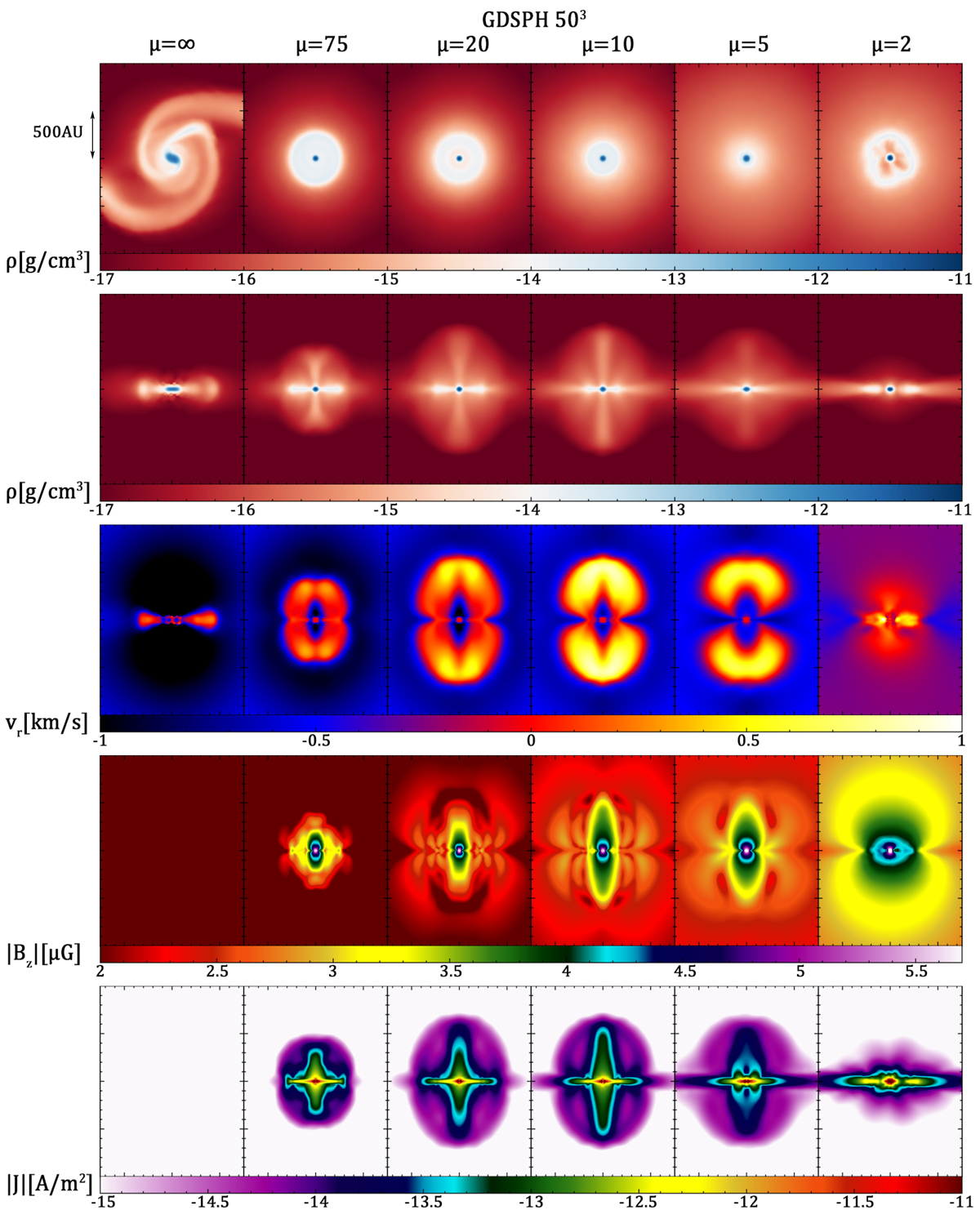Fig. 11.

Result of the magnetized cloud collapse for GDSPH at a resolution of 503 particles with varying magnetic flux ratio μ going left to right from high to low. We show figures at the time of jet formation (around t = tff), which occurs due to the winding of the magnetic field during the collapse, which produces a magnetic tower structure. The top row shows a rendered face-on slice (Lxy = [2000 AU, 2000 AU]) of the density [g cm−3], the rest of the rows show rendered slices through the rotation axis (Lxz = [2000 AU, 2000 AU]), where the second shows density [g cm−3], the third show radial velocity [km s−1], the fourth show the absolute poloidal magnetic field [μG] and the fifth shows the current density [A m−2], all quantities are shown in logarithmic scale. The pure hydrodynamic run (μ = ∞) of GDSPH becomes gravitationally unstable and is very similar to that of TSPH in Fig. 12. We can see that a jet is launched in the cases of μ = 75, 20, 10, 5 while in the case of μ = 2 the interchange instability (see Fig. 16) disrupts the disk before jet launching.
Current usage metrics show cumulative count of Article Views (full-text article views including HTML views, PDF and ePub downloads, according to the available data) and Abstracts Views on Vision4Press platform.
Data correspond to usage on the plateform after 2015. The current usage metrics is available 48-96 hours after online publication and is updated daily on week days.
Initial download of the metrics may take a while.


